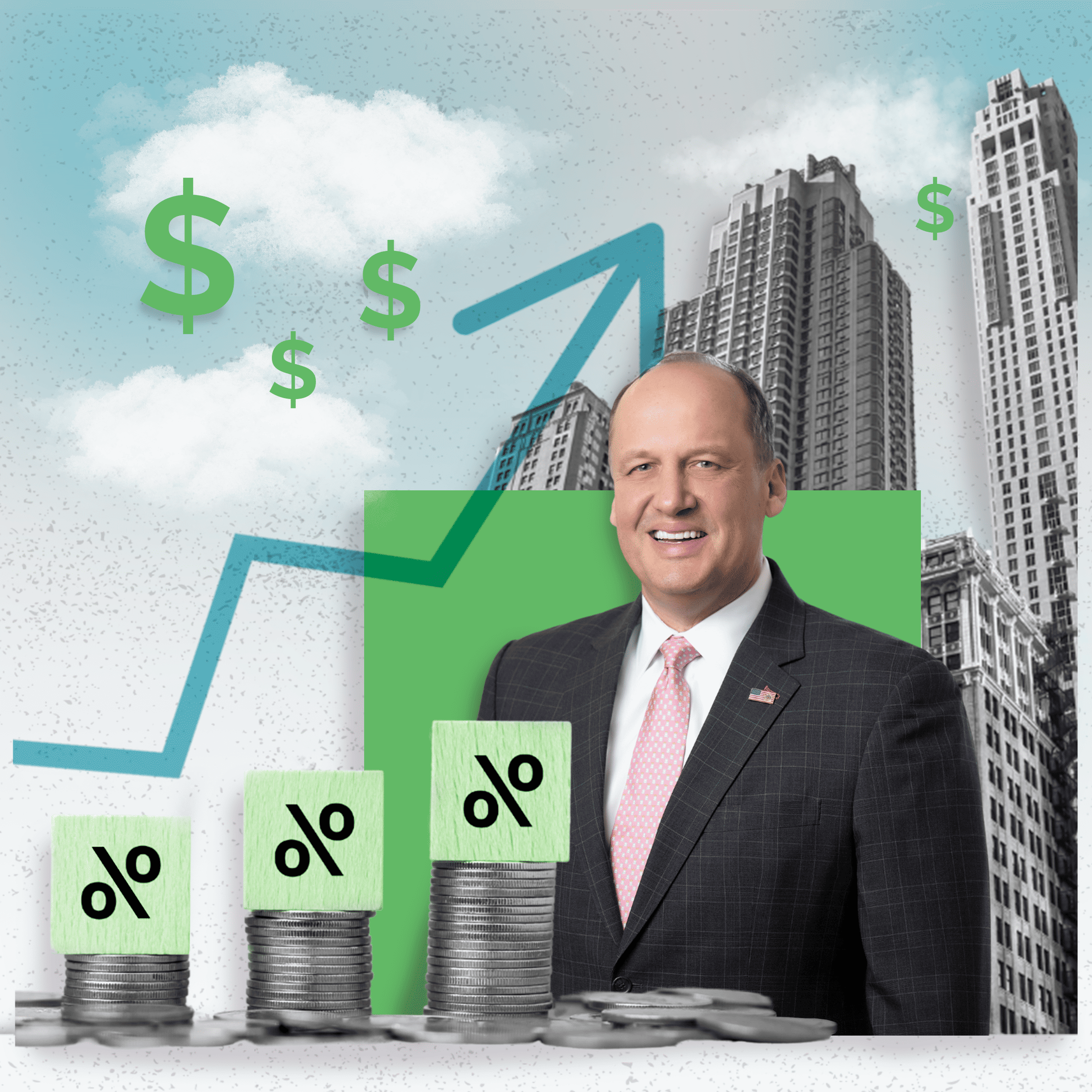There’s been a great deal of speculation about inflation and what lies ahead, with economists, policymakers, financial analysts, and business owners/brands grappling with different scenarios to try to predict what’s ahead. This has had a profound impact not only on consumer goods and services, but also on the broader commercial real estate (CRE) sector.
Inflation is a key component to CRE and how the industry reacts to inflation hinges on a mix of factors such as market conditions, regulations, monetary policy, property type, and local fundamentals. But generally speaking, here’s a typical snapshot of the CRE-inflation relationship:
Positive Impacts of Inflation on CRE
- Rental Income Growth: Higher inflation can lead to increased rents to keep pace with rising costs and prices.
- Property Value Appreciation: Inflation can drive up property values as replacement costs and demand increase.
- Increased Demand: Inflation can to a small extent stimulate economic growth, boosting CRE demand.
Negative Impacts of Inflation on CRE
- Expensive Financing: To combat inflation, interest rates will often rise, increasing borrowing costs for developers and investors, and loan refinancing.
- Increased Operating Expenses: Rising costs for materials, labor, and services can squeeze profit margins.
- Income Challenges: Higher rents may be harder for tenants to pay, leading to vacancies and reduced cash flow.
- Potential for Over-Supply: As inflation rises some developers may rush to build before costs go up, which can cause overdevelopment.
CRE and Inflation: a Historical Perspective
CRE is often seen as a hedge against inflation, and investors are eager to identify the right time to pull the trigger. However, the relationship between inflation and CRE isn’t always that straightforward. While rising inflation often boosts CRE values and demand, history shows mixed results.
The 1970-80s real estate and commercial real estate building boom, particularly in office, was triggered by 14%-plus inflation, among other contributing factors. New CRE construction values increased 65% and interest rates peaked at 19% by the early 1990s. Eventually, overbuilding, along with the savings and loan crisis and other factors. Conversely, decreasing inflation typically leads to declining CRE values, dampening investment appetite. The post-2008 financial crisis, on the other hand, saw an unexpected twist.
Following the 2008 financial crisis, inflation remained subdued, averaging 1 to 2% annually throughout much of the 2010s. The Federal Reserve maintained near-zero interest rates in an effort to stimulate economic recovery. However, a pivotal factor emerged: technology. The 2010s became a transformative decade marked by technology advancements, groundbreaking innovation, and significant job growth in tech industries.
Demand for industrial properties climbed, especially warehouses and distribution centers, and office space in tech hubs. 2015 in particular was a stellar year for office, with net demand reaching 82.3 million square feet — the highest level since 2006.
Additionally, the low cost of financing encouraged borrowing and investment, resulting in more than $2.5 trillion in CRE transactions between 2010 and 2016.
This is certainly not reflective of all CRE cycles, but it does show that CRE’s inflation response is highly situational. Whether historically high or low, inflation could present unique investment opportunities in different conditions. No single formula applies. Investors and property owners should anticipate adapting and evolving, embracing flexible strategies for each unique market cycle. This should prove true for the next one.
CRE and Inflation: 2024 and Beyond
Inflation reached 9.1% in 2022 stemming from the pandemic, prompting the Federal Reserve to raise interest rates sharply to cool inflation, which ultimately retreated to 2.4% in September of 2024 — near the Fed’s target of 2%. This gave the central bank enough confidence to loosen monetary policy, cutting interest rates twice so far this year for a combined 0.75 percentage points. The shift has boosted confidence among many CRE owners and investors that a recession has most likely been avoided, and that the capital markets are in what Moody’s refers to a “pre-recovery” stage.
Moody’s explains that a typical CRE downturn is usually characterized by slower transaction volumes, reduced lending, falling property values, and tightening credit. While some of this is still at play in today’s market, the general consensus is the sector is making progress and is poised for increased stability in 2025.
According to a survey by Deloitte, 88% of real estate execs expect company revenue to increase in 2025. The CRE Finance Council’s Third-Quarter 2024 (3Q 2024) Board of Governors (BOG) Sentiment Index survey further shows that 81% of respondents anticipate increased CRE demand, up from 54% last quarter. Borrower demand for financing is also up, with 85% projecting higher loan demand compared to 65% in Q2 2024.
Despite this optimism, the CRE market is reminded to proceed with caution as we head into 2025. The September 2024 Consumer Price Index — which measures prices for goods and services — increased by 0.2% month-over-month and 2.4% year-over-year. This suggests that inflation pressures are not yet fully under control. The Federal Reserve is being careful about cutting rates too quickly which could undermine inflation; while easing it too slowly could hinder economic growth and employment. It is a careful balancing act with no clear path.
Federal Reserve Chair Jerome Powell echoed this thought, saying the Fed is not on any preset course. “We don’t know the right pace, and we don’t know exactly where the destination is; so the point is to find that, to find the right pace and the right destination as we go. And I think there’s a fair amount of uncertainty about that…you don’t want to tie yourself up with guidance, you want to be able to make sensible decisions as you go.”
Tackling Inflation
There’s reason to be cautiously optimistic about the current and projected inflationary environment and what that means for CRE. With decreasing inflation lowering mortgage and capitalization rates, one can expect the result to positively impact CRE finance and asset values. But while no property is immune to inflation, a strategic investment approach may help mitigate inflationary effects and protect long-term returns.
“Regardless of where we are in the economic cycle,” said Marc DeLuca, KBS CEO and regional president, Eastern U.S., in Forbes, “CRE has historically remained one of the strongest tangible alternative investments available in all economic environments. CRE held up before, and I believe it will hold up again — especially since the demand for assets has never been greater.
KBS’ business model and success have been built upon acquiring and managing high-quality assets in top-performing markets. By focusing on quality in prime locations (e.g., central business districts or logistics hubs), we’ve found that these properties can typically better navigate inflationary challenges. These assets tend to have lower vacancies and stronger demand, providing more predictable cash flow and reduced risk — making them more resilient to economic shifts.
What’s more, top-tier properties are often more liquid, making it easier to sell or refinance if necessary. As we move ahead, adapting to shifting policy landscapes and balancing growth strategies with risk management is important. Like Chair Powell stated, it’s pragmatic to make sensible decisions as we go.
Conclusion
Inflation appears to be heading in the right direction, but there’s no clear indicator of what that trajectory looks like or what the precise impact for CRE will be. Instead, the outlook for inflation remains a subject of debate, and the coming months could offer new insights into how CRE and the broader global economies will navigate this complex issue.




